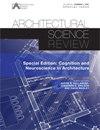新冠肺炎时期网络教学对基础设计工作室的影响——技术验收模型的应用
IF 1.8
3区 艺术学
0 ARCHITECTURE
引用次数: 1
摘要
本文章由计算机程序翻译,如有差异,请以英文原文为准。
The effect of online teaching on basic design studio in the time of COVID-19: an application of the technology acceptance model
In response to the COVID-19 pandemic and to reduce its spread, education in Jordan was urgently forced in March 2020 to switch from physical education to distance one. Architecture, accordingly, transitioned suddenly from face-to-face to remote design studio education. Recently, many questions have been raised about the competency of teaching architecture remotely due to its practical nature. This study aimed at investigating the effect of applying a distance studio teaching approach in the first year of architectural education on students' skill acquisition, performance, and achievement. The study used a mixed-method approach to assess students' ‘perceived usefulness’ and ‘perceived ease of use’ of online teaching of the Basic Design course in addition to its effect on the perceivers themselves by applying the Technology Acceptance Model (TAM). The findings indicate that it can be beneficial in terms of enhancing students' performance, motivation, and interaction and enriching course goals, content, and teaching process.
求助全文
通过发布文献求助,成功后即可免费获取论文全文。
去求助
来源期刊

Architectural Science Review
ARCHITECTURE-
CiteScore
4.80
自引率
8.70%
发文量
34
期刊介绍:
Founded at the University of Sydney in 1958 by Professor Henry Cowan to promote continued professional development, Architectural Science Review presents a balanced collection of papers on a wide range of topics. From its first issue over 50 years ago the journal documents the profession’s interest in environmental issues, covering topics such as thermal comfort, lighting, and sustainable architecture, contributing to this extensive field of knowledge by seeking papers from a broad geographical area. The journal is supported by an international editorial advisory board of the leading international academics and its reputation has increased globally with individual and institutional subscribers and contributors from around the world. As a result, Architectural Science Review continues to be recognised as not only one of the first, but the leading journal devoted to architectural science, technology and the built environment. Architectural Science Review publishes original research papers, shorter research notes, and abstracts of PhD dissertations and theses in all areas of architectural science including: -building science and technology -environmental sustainability -structures and materials -audio and acoustics -illumination -thermal systems -building physics -building services -building climatology -building economics -ergonomics -history and theory of architectural science -the social sciences of architecture
 求助内容:
求助内容: 应助结果提醒方式:
应助结果提醒方式:


